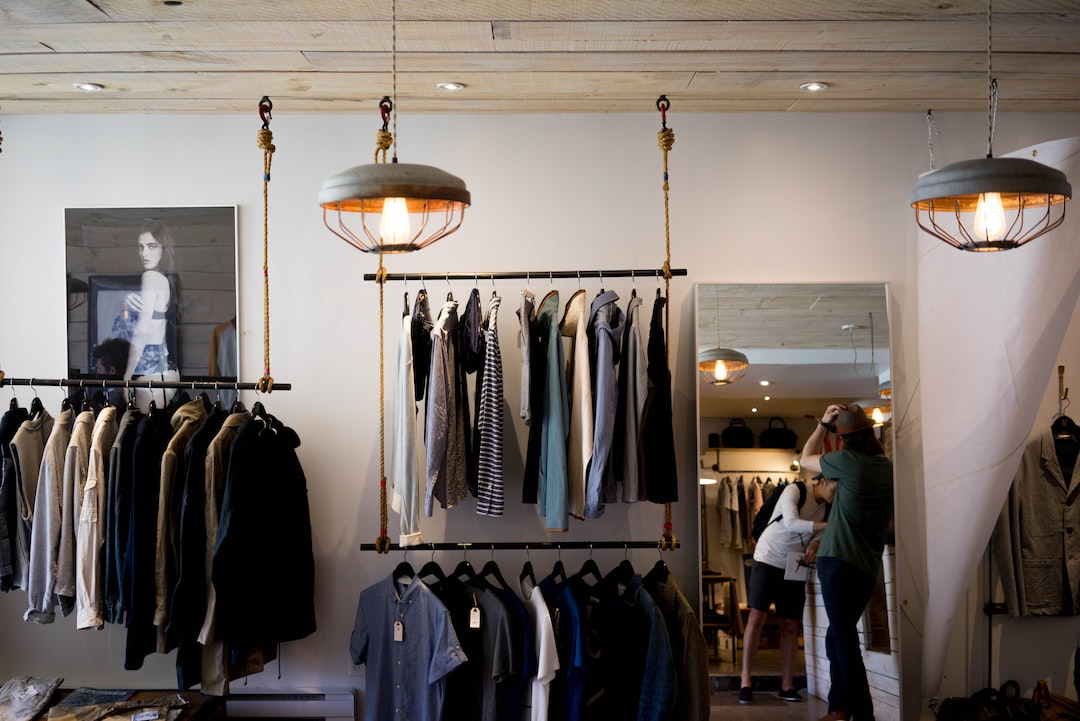Artificial Intelligence (AI) has been making waves in various industries, and the fashion industry is no exception. In fact, the fashion industry is one of the most dynamic industries that AI has been making significant contributions to. AI is a computer science field that focuses on creating intelligent machines that can work and learn like humans. The technology has been around for some time now, but its application in the fashion industry is relatively new.
AI is being used in various ways in the fashion industry, from design to marketing, and even in the supply chain. One of the most significant applications of AI in the fashion industry is in the design process. AI is revolutionizing the design process, from ideation to creation, by making it more efficient, accurate, and cost-effective.
In this blog post, we will explore how AI is changing the fashion industry. We will look at how it is revolutionizing the design process, how it is impacting the customer shopping experience, how it is streamlining the supply chain, how it is promoting sustainable fashion practices, and how it is influencing social media marketing. We will also look at the future of AI in the fashion industry and the key takeaways from its current applications.
AI in Design: How AI is Revolutionizing the Design Process, from Ideation to Creation
Artificial Intelligence (AI) has been a game-changer in many industries, and the fashion industry is no exception. AI is revolutionizing the design process, from ideation to creation, by providing designers with powerful tools to create new designs and improve existing ones. With AI, designers can create custom designs that match the preferences of their customers, optimize the design process, and reduce waste.
One of the most significant ways that AI is changing the design process is through the use of generative design. Generative design is a process where designers input specific parameters, and the AI generates multiple design options based on those parameters. This process allows designers to create a large number of designs in a short amount of time, which can significantly speed up the design process.
AI is also helping designers improve their designs by analyzing customer data and feedback. By analyzing customer data, designers can identify patterns in customer preferences and tailor their designs to meet those preferences. This process allows designers to create custom designs that match the preferences of their customers, resulting in increased customer satisfaction and loyalty.
Another way that AI is revolutionizing the design process is through the use of 3D printing. 3D printing allows designers to create physical prototypes of their designs quickly and efficiently. This process allows designers to test their designs before production, reducing the risk of errors and waste.
In addition to improving the design process, AI is also helping designers reduce waste by optimizing the use of materials. AI can analyze the design and identify areas where material usage can be optimized, reducing waste and improving sustainability.
Overall, AI is changing the way designers approach the design process. By providing designers with powerful tools to create new designs and improve existing ones, AI is helping designers create more efficient, sustainable, and customer-centric designs. As AI continues to evolve, it will undoubtedly play an increasingly important role in the fashion industry, driving innovation and improving the customer experience.
Personalized Shopping Experience: The Impact of AI on Customer Experience and How It’s Changing the Way We Shop
As consumers, we all want a shopping experience that is tailored to our needs and preferences. With the help of AI, fashion retailers are now able to provide a highly personalized shopping experience that takes into account our individual tastes, preferences, and even our mood.
One of the most significant ways AI is impacting the shopping experience is through the use of recommendation engines. These engines analyze a customer’s purchase history and browsing behavior to suggest products that they are likely to be interested in. This not only helps customers find items they may not have otherwise discovered but also helps retailers increase sales and improve customer loyalty.
AI is also being used to create virtual personal stylists that can help customers put together outfits and suggest complementary pieces. By analyzing a customer’s past purchases, preferred styles, and even their social media activity, these virtual stylists can make personalized recommendations that are tailored to their unique taste.
But AI’s impact on the shopping experience goes beyond just personalized recommendations. Retailers are also using AI to improve the overall customer experience by making it more convenient and efficient. For example, some stores are using chatbots powered by AI to answer customer questions and provide assistance 24/7. This not only saves customers time but also reduces the workload of customer service representatives.
AI is also being used to create more accurate sizing recommendations, reducing the need for customers to try on multiple sizes before finding the right fit. By analyzing a customer’s past purchases and body measurements, retailers can provide more accurate recommendations for size and fit, reducing the number of returns and exchanges.
Overall, the impact of AI on the shopping experience is significant, providing customers with a more personalized and efficient experience. As AI technology continues to advance, we can expect to see even more innovation in the fashion industry that will continue to improve the way we shop.
Retailers are also using AI to improve the overall customer experience by making it more convenient and efficient.
Supply Chain Optimization: How AI is Streamlining the Supply Chain
The fashion industry is a complex and ever-changing landscape that requires a lot of coordination and planning to ensure that products are delivered to the right place at the right time. This is where AI comes in. By leveraging the power of data and automation, AI is streamlining the supply chain from sourcing materials to product delivery.
One of the most significant challenges in the fashion industry is sourcing materials. With so many suppliers and materials to choose from, it can be challenging to find the right ones that meet the quality and sustainability standards of the brand. AI is helping to address this challenge by analyzing data on suppliers and materials and providing recommendations based on past performance and other factors.
Once materials are sourced, the next step is production. AI is revolutionizing the production process by automating tasks such as pattern-making, cutting, and sewing, which traditionally required a lot of manual labor. This not only speeds up the production process but also reduces errors and waste.
Another area where AI is making a significant impact is in inventory management. By analyzing data on sales trends and customer demand, AI can help brands optimize their inventory levels to avoid stockouts and overstocking. This not only saves money but also ensures that products are available when customers want them.
Finally, AI is helping to streamline the delivery process by optimizing logistics and transportation. By analyzing data on shipping routes, weather patterns, and other factors, AI can help brands identify the most efficient and cost-effective way to deliver products to customers.
Overall, AI is transforming the fashion industry by streamlining the supply chain and making it more efficient, cost-effective, and sustainable. Brands that embrace this technology will be better positioned to meet the demands of today’s consumers and stay ahead of the competition.
Brands that embrace this technology will be better positioned to meet the demands of today’s consumers and stay ahead of the competition.
Sustainable Fashion: The Role of AI in Promoting Sustainable Fashion Practices and Reducing Waste
As the fashion industry continues to grow and evolve, there is a growing concern about its impact on the environment. The industry is notorious for its waste, with millions of tons of textiles ending up in landfills every year. However, with the help of AI, the industry is beginning to take a more sustainable approach.
One of the ways AI is promoting sustainable fashion practices is through the use of predictive analytics. By analyzing data on consumer behavior and market trends, AI can help fashion brands make more informed decisions about what to produce and how much to produce. This can help reduce waste by ensuring that products are only made when there is a demand for them.
AI is also being used to optimize the production process, from sourcing materials to manufacturing. By using algorithms to analyze data on the environmental impact of different materials and production methods, fashion brands can make more sustainable choices. For example, AI can help identify materials that are more eco-friendly, or manufacturing methods that use less energy and produce less waste.
In addition to optimizing the production process, AI is also being used to promote more sustainable consumption habits. By analyzing data on consumer behavior and preferences, AI can help fashion brands create more sustainable products that meet the needs of their customers. For example, AI can help identify materials that are more durable and long-lasting, or designs that are more versatile and can be worn in different ways.
Overall, the role of AI in promoting sustainable fashion practices and reducing waste is becoming increasingly important in the fashion industry. By using data and algorithms to make more informed decisions about production and consumption, fashion brands can reduce their environmental impact and create a more sustainable future.
One of the ways AI is promoting sustainable fashion practices is through the use of predictive analytics.
AI and Social Media: The Influence of AI on Social Media Marketing
The fashion industry has always relied on social media to reach its target audience. With the advent of AI, social media marketing has become more effective and efficient. AI is helping brands connect with their target audience in a more personalized way. It is enabling them to create content that resonates with their audience and drives engagement.
One of the key benefits of AI in social media marketing is its ability to analyze large amounts of data. AI algorithms can analyze social media data to understand what works and what doesn’t. They can identify patterns and trends in consumer behavior, which can help brands create more effective marketing campaigns.
AI is also helping brands create more personalized content. By analyzing consumer data, AI algorithms can understand what consumers are interested in and create content that is tailored to their interests. This can help brands create a more engaging and relevant social media presence.
Another way that AI is influencing social media marketing is through chatbots. Chatbots are AI-powered tools that can interact with consumers in a conversational way. They can answer questions, provide recommendations, and even make purchases on behalf of consumers. This can help brands provide a more seamless and convenient shopping experience for their customers.
Finally, AI is helping brands measure the effectiveness of their social media marketing campaigns. By analyzing data on engagement, clicks, and conversions, AI algorithms can help brands understand what is working and what isn’t. This can help brands optimize their social media marketing campaigns for better results.
AI is revolutionizing social media marketing in the fashion industry. It is helping brands connect with their target audience in a more personalized way, create more engaging content, and measure the effectiveness of their marketing campaigns. As AI continues to evolve, we can expect even more innovation in social media marketing in the years to come.
They can answer questions, provide recommendations, and even make purchases on behalf of consumers.
Conclusion: The Future of AI in the Fashion Industry
After exploring the various ways in which AI is transforming the fashion industry, it’s clear that this technology is not just a passing trend, but rather a major force that is here to stay. From design to customer experience, supply chain optimization to sustainable fashion practices, and even social media marketing, AI is revolutionizing the way the fashion industry operates.
One of the key takeaways from our exploration of AI in the fashion industry is that this technology has the potential to greatly improve efficiency and productivity. By automating certain tasks and processes, designers and manufacturers can save time and resources, while also reducing the risk of errors or inconsistencies.
Another important impact of AI in the fashion industry is its ability to provide a personalized shopping experience for customers. By analyzing customer data and preferences, AI algorithms can recommend products and styles that are tailored to each individual’s unique tastes and needs. This not only enhances the customer experience, but also helps brands to build stronger relationships with their customers.
Furthermore, AI has the potential to promote more sustainable fashion practices by reducing waste and making the supply chain more transparent. By using data analytics to track the lifecycle of materials and products, fashion brands can identify areas where they can improve their sustainability practices, such as reducing water usage or using eco-friendly materials.
Finally, the influence of AI on social media marketing cannot be ignored. By analyzing social media data, AI can help brands to understand their target audience better and create more effective marketing campaigns that resonate with their customers.
Overall, the future of AI in the fashion industry looks bright. As technology continues to evolve, we can expect to see even more innovative uses of AI in the fashion industry, from virtual try-on experiences to predictive analytics that anticipate customer needs. It’s an exciting time for the fashion industry, and AI is playing a major role in shaping its future.





